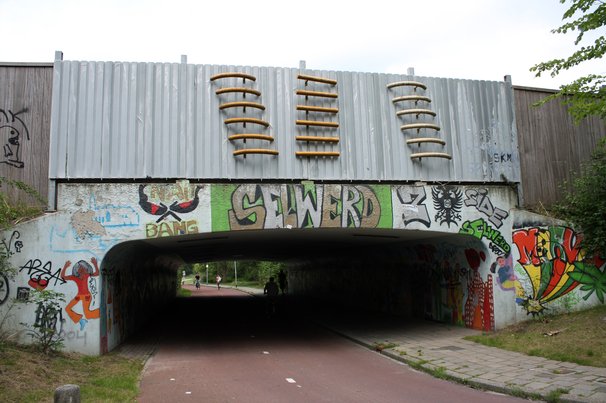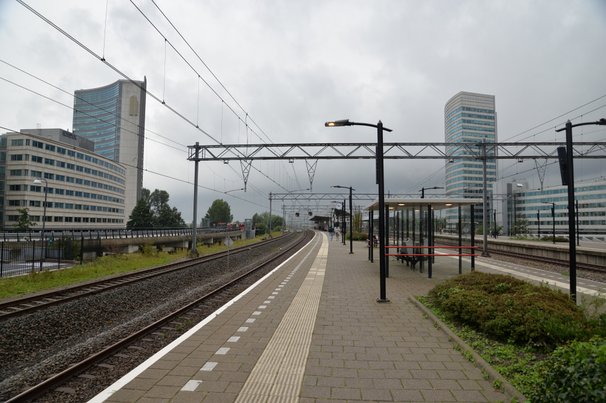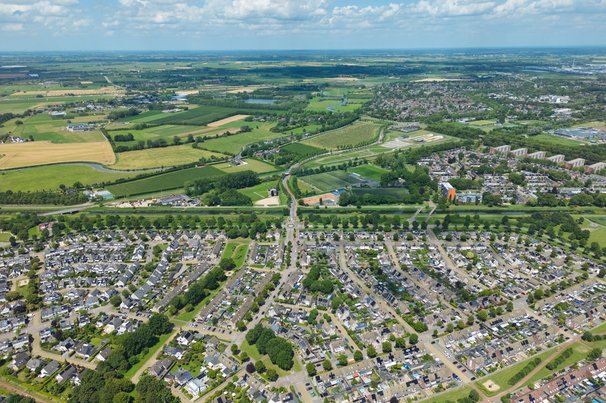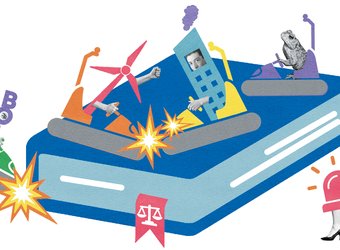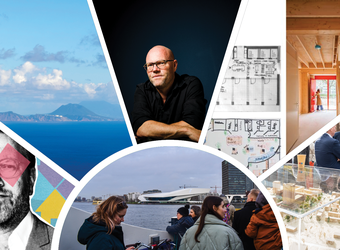Verslag Technologie krijgt een almaar grotere plek in het dagelijks leven. De wisselwerking met de mens vindt meer en meer plaats in digitale, sociale en fysieke netwerken. In haar recente ‘Verkenning technologische innovaties in de leefomgeving’ analyseert de Raad voor de leefomgeving en infrastructuur (Rli) de invloed van nieuwe technologieën op het publieke en private domein voor wat betreft voeding, mobiliteit en gebouwen. Ze breekt ook een lans voor een adaptieve, in netwerken participerende overheid. Om de bevindingen te belichten, organiseerde de Rli op 30 januari een conferentie. De voertaal was Engels.
Connecting the Dots: Acceleration, breakthroughs and co-creation in food, mobility and buildings, 30 January
On January 22, the Dutch Council for the Environment and Infrastructure (Rli) presented its “Survey of technological innovations in the living environment” to the Dutch Minister of Economic Affairs, the Minister of Infrastructure and the Environment, and the Minister of Housing and the Central Government Sector. In this survey, the Council addresses the relationship between technological and social innovation, in particular with regard to food (health and nutrition), the built environment and mobility. How can government adapt to changing cultural and economic dynamics, social patterns and moral values? How can it provide sustainable policy and continue to act in the public interest? The Council advises government to address five urgent questions concerning: the nature of data infrastructure and the management and impact of data in the private and public domain; the organisation of public debate; the impact of technological innovation on spatial planning and infrastructure; and the changing role of government itself.
Inclusion and cohesion
To kick-start public debate the Rli organised a conference, “Connecting The Dots”, on January 30. After a word of welcome by Henry Meijdam, Chair of Rli, and the introduction of Peter-Paul Verbeek, conference Chair, Rli-member Agnes van Ardenne briefly introduced survey results. As rapidly developing technologies become available in the public domain, more people around the world are using them to organise themselves, to live and work more efficiently and increase the quality of life. The pace and success of innovation, she said, seems to be increasingly interrelated with and driven by physical and digital networks in which autonomous individuals act and connect. ‘Technology is helping us make more personal choices regarding food, mobility and the built environment.’ Urban societies are thus becoming ever more complex networks in which citizens interact with each other and with various communities, private and public, thus partly giving shape to the living environment as well as to economic and social values. Governmental networks appear at present to be too exclusive for governmental organisations on various levels to fully partake in this process and to enable government to act as a partner, for instance by providing an educational system in line with a networked society. Government needs to fully interact, rather than stand on the sidelines, and become more agile in order to be able to act in the public interest. ‘We need a culture of inclusion and cohesion.’
In a first response to the Rli’s report, Secretary-General Maarten Camps (Ministry of Economic Affairs) states that technological innovation can lead to new solutions for global challenges: climate change, scarcity of natural resources or healthy ageing. Products and devices will become smarter, numerous networks and “the internet of things” provide opportunities to make entire cities smart. ‘This will happen. The question is how it will happen. Do we welcome all technological innovation or do we, as government, try to strike a balance between providing a scope for innovation and guarding the public interest?’ In order to do the latter, Camps says, government will have to reconsider its policies and regulations. ‘The Rli’s report is a positive and important contribution to the debate and the work that has to be done in order to reap the benefits of new technologies for society.’

Photo: Tech Innovations skyscrapercompetion honourable mention 2014 Bron eVolo REX Hollandse Hoogte, http://en.rli.nl/conference-connecting-the-dots/photos
‘De technologie-gedreven stad: grote veranderingen op komst - Afbeelding 1’
A view from space
Researcher and former astronaut André Kuipers (ESA) looked at how technological game changers might shape tomorrow’s world. With a global population increase of 200,000 each day and with the majority of the population living in cities, there are questions to be answered. How to feed all these people and how to design, develop and organise cities in a sustainable way? ‘Predicting the future is hard’, he said, illustrating his point with a number of predictions from eminent scientists who got it completely wrong. But space technology has often been a source of more general innovation that has shaped everyday life: advances in navigation and communication systems are obvious examples.
According to Kuipers, many new technologies are currently in development that may shift or help determine the direction in which mankind and Earth are heading. Technology for collecting solar energy on a grand scale (in space) may help to make energy production sustainable. Nuclear fusion, although still very much a research subject, may someday provide clean energy. Kuipers underlines the need for sustainability. ‘We are a plague’, he says. Images of the Earth from space show the extent to which natural areas have within decades been replaced by agriculture for mass food production, unbalancing natural systems and leaving land vulnerable to flooding and landslides. Likewise, thousands and thousands of lights of fishing boats bear witness to the depletion of fish stocks in oceans worldwide. Kuipers is an optimist nevertheless. ‘We need to find a balance and I do believe young people, using technology, will find smarter, more efficient ways of managing the planet’s resources.’
A historical perspective
Another optimistic message came from Carlota Perez (London School of Economics), who said: ‘The possibility of a sustainable global golden age lies ahead.’ The world has known five technological revolutions in 240 years, she went on to explain, and each leads to a techno-economic paradigm shift. Each brings a far-reaching transformation of economy and society: ‘New ways of producing, working, consuming and living.’ The introduction of the microprocessor in 1971 marked the start of the fifth, the age of information and telecommunications technology. ‘We are only halfway and history tells us that we’ve got the best half to go.’
By looking at previous technological revolutions, Perez has come to the conclusion that each time installation of the new technology, a period of 20 to 30 years, brings (excessive) wealth to few as well as unemployment and income polarisation. After the technology has been installed it can be deployed, from which the entire economy and society profit. ‘It’s a process of pendular swings, instigated by resistance to major changes.’ A bubble prosperity is followed by a collapse which ushers in a next phase, a Golden Age. Society shifts from financial to production capitalism in which new industries, new activities and new systems, such as the sharing economy, come together. ‘Government is impotent or pushed out during the instalment phase, like it was this time, but in the deployment phase it is active, it shapes markets and it guides innovation.’ Another important trademark of industrial revolutions, according to Perez, is that during instalment the technology shapes society – ‘new things shape your behaviour’ – but during deployment society itself takes the lead: ‘What do we want the technology to do?’ Climate change is not the problem, she says, but the solution. It should induce green growth and a sustainable lifestyle. ‘It is the task of this generation to be bold, to choose well and act upon it.’
Feeding the world
In a world in which 1.5 billion people (of 7 billion people) are overweight or obese and 1.5 billion people are on the verge of starving an urgent question is how technology will help make choices concerning the production, distribution and waste of food, as well as the preparation of healthy food. Jaap Seidell (University of Amsterdam) explains why, given an expected substantial world population increase, global food security is one of the UN’s main concerns for the future. Of the Earth’s surface 30% may consist of fertile soil, but only 10% can be used as arable land. That is not enough to feed everyone, so ‘we have to invent ways of producing more food per acre’. The same goes for fresh water and drinking water supplies. And are we able, Seidell wonders, to prevent that one third of produced food is wasted, as it is now? The human diet has long been that of the hunter-gatherer, very sustainable indeed. But population growth, urbanisation and new technology have drastically changed food culture. High energy, low nutrient foods have become the staple the diet for many, as they are often the cheapest and most easily available types of food. In today’s urban slums the only food on offer is street food, packaged or deep-fried: ‘The daily menu of 1 to 2 billion people.’ Fresh water is not available or too expensive, so soft drinks are consumed. As a result, diseases formerly related to an affluent lifestyle have become a global health risk. Distribution issues add to the problem. Seidell: ‘Palm oil is produced at a grand scale for western markets but no longer wanted by western consumers, as it is high in saturated fat, and subsequently dumped in low and middle income countries.’
Since the 1920’s food production has been about quantity, not quality. This is what needs to change, says Seidell. Technology can help to create a more sustainable food culture, he proposes, by enabling local food production, short production and supply chains and more sustainable production. Urban agriculture offers promising prospects for a wide range of issues, from countering malnutrition to furthering social inclusion. ‘New perspectives on city (re)design show that space for agriculture is available, to a degree that makes a self-sustaining city a reality. But not without a substantial energy demand.’ So here lies a combined challenge for technology: sustainable food thanks to sustainable energy. ‘This is a realistic approach to the future development of cities.’
Other key note speakers were Kent Larson (Massachusetts Institute of Technology) and Bryant Walker Smith (Stanford Law School). You can find their presentations at:
http://en.rli.nl/conference-connecting-the-dots/speakers
You can find both English and Dutch (interactive) magazine versions of the survey at:
http://www.rli-onlinepublicaties.nl/
The Dutch version of the survey is available at: http://www.rli.nl/sites/default/files/verkenningtechnologischeinnovatiesjan2015nl.pdf
Photo on top: Logo Connecting the Dots, en.rli.nl
Cover: ‘2015.02.03_Technology Driving Society_660’


